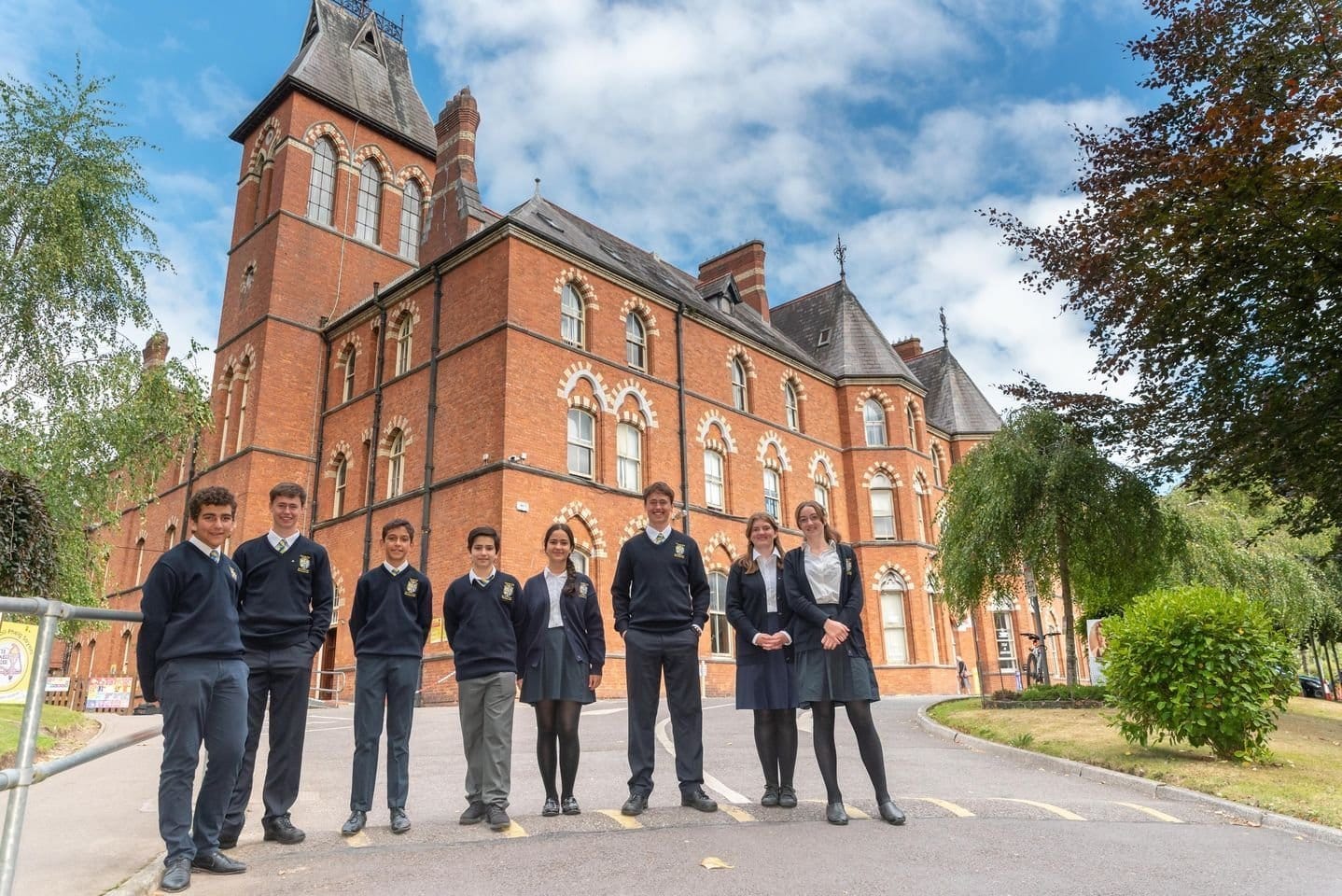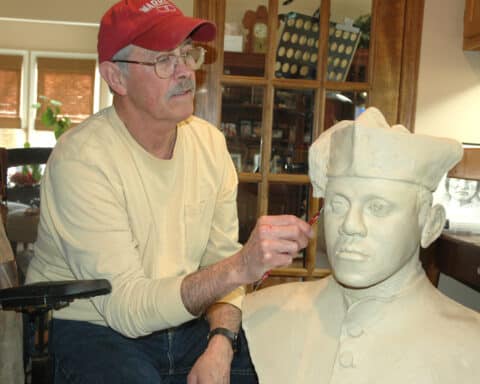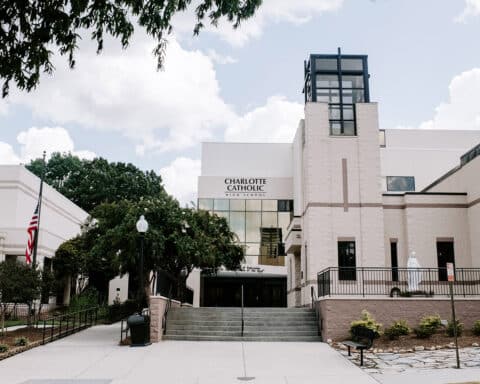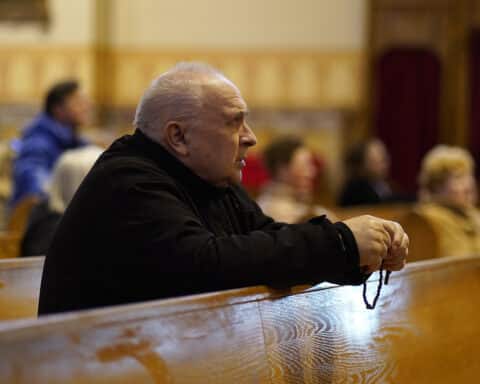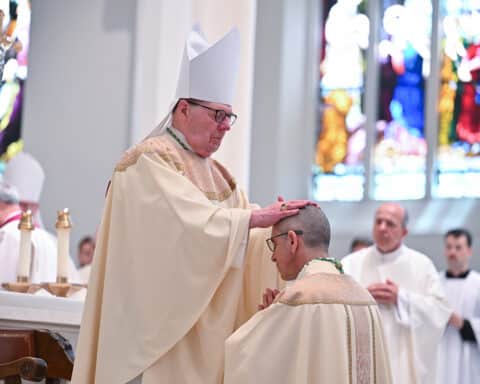(OSV News) — For those who haven’t seen the film “Angela’s Ashes” — the cinematic version of a sometimes relentlessly bleak book depicting early mid-20th century Irish Catholic family life in Limerick — Pádraig Cantillon-Murphy has one word of advice: Don’t.
“It captures that moment in time where really hope seemed to have disappeared from the Irish Church — and particularly, Catholic education,” Cantillon-Murphy said. “It was a very difficult time; it was a dark time in many dioceses. And one that, we are in a way, rebuilding only now from.”
Cantillon-Murphy wasn’t offering a movie review to his Washington listeners during a June 29 Catholic Information Center lecture, “The Future of Catholicism and Education in Modern Secular Ireland.” Rather he wanted to give his audience context to why he and other dedicated Catholics in Ireland 2020 launched Mater Dei Academy, Ireland’s first independent Catholic school in the classical tradition located in Cork.
Mater Dei Academy is part of this new era of rebuilding. Independent, lay-run, and unapologetically Catholic, Mater Dei offers Irish a new model of Catholic education in Ireland. It is, in a way, a retrieval of Ireland’s educational legacy that made a global impact.
Ireland has a lengthy and distinguished culture of teaching and learning — including the preservation of many of European civilization’s foundational texts during the Dark Ages. As Europe was savaged by barbarian tribes and Rome eventually fell, “there were a few Irish monks who were busily beavering away, manuscript copying,” said Cantillon-Murphy.
“We probably saved half of civilization, with what the Irish monks achieved,” he said. “It was extraordinary by any standard that a small nation not just saved the religious texts from obliteration, but saved many of the secular texts. The Irish monks were quite comfortable copying Virgil and Horace and Homer.”
Following Oliver Cromwell’s 1652 English conquest of Ireland until 1782, Cantillon-Murphy noted Irish Catholics were forbidden from learning. Nonetheless, classical schooling continued in clandestine “hedge schools”: barns, houses, and other private structures.
Ireland’s educational achievements — even amid such challenges — are often overlooked given the current challenges. Students can still find themselves struggling, Cantillon-Murphy said, referring to data from a 2022 Educational Research Centre report about what 18% of teachers said about third year students (equivalent to freshman in high school for the U.S.).
“Basically, one in five coming out of the schools can’t read, can’t write, can’t speak and can’t listen. Which isn’t a great advertisement for the public school system,” said Cantillon-Murphy. “We are an education system that is in crisis.”
That crisis was apparent to both Cantillon-Murphy — an MIT-educated engineer with a doctorate — and his wife, Grace, when they returned to Ireland from America in 2010.
“It sort of broke my heart to realize that Catholic education — which I had thought growing up was one of the greatest education systems in the world, because it was Catholic and it was excellent — well, it certainly wasn’t Catholic anymore, or at least we weren’t teaching people how to be Catholic anymore. And it certainly wasn’t excellent anymore,” said Cantillon-Murphy. “I think you can appreciate why Grace and I were concerned enough to look for alternatives.”
The decline, Cantillon-Murphy said, was the result of several factors, as well as an unusual history between the Irish state and the Catholic Church.
“When the Irish state was founded in 1921, the Irish government was not in a position to provide education for its citizens, and the Catholic Church essentially stepped in to take the role of the state, and to provide that education to boys and girls,” Cantillon-Murphy noted. “And they did that — essentially working for free, for the state.”
Once the modern Irish state became self-sufficient, it “inherited” a school system built by Irish Catholic teaching orders, such as the Sisters of Mercy, Sisters of Loreto, Christian Brothers, De La Salle Brothers, and the Presentation Sisters and Presentation Brothers.
Almost 50% of modern Irish secondary schools retain an association with religious orders and groups, and therefore at least a nominal Catholic character. The remainder are state-controlled. Schools that are privately funded and independent of the government are such a minority that they barely register in statistical tallies.
“So we have this extraordinarily unique position where separation of church and state exists in theory, but the state has inherited all of these schools which, historically, had a Catholic ethos,” said Cantillon-Murphy. “And therein lies a fundamental conflict of interest, you might say.”
As decades of church abuse and its concealment were revealed during the 1980s and 90s, it was, Cantillon-Murphy told his audience, a “watershed” moment for Catholic education in Ireland.
Classrooms and schools became a cultural battleground, and a head-spinning secularization took hold in the country.
In 2018, the Eighth Amendment to the Constitution of Ireland — specifically protecting the unborn — was repealed by a two-thirds majority. Ninety percent of those who voted “yes” had been, Cantillon-Murphy shared, educated in Catholic schools.
Only 20 seminarians have currently been gleaned from 26 dioceses. Mass attendance hovers in the range of 25%.
It’s a discouraging climate, to be sure. But not so discouraging that Cantillon-Murphy, his wife and other like-minded Catholics simply turned away.
“So we began in 2017,” he said, referring to the genesis of Mater Dei Academy. “Coffee room conversations became a working group — a working group that in the end, became our first board of trustees. And we opened Mater Dei Academy in 2020 with 12 students.”
Cantillon-Murphy emphasized the foundation of Mater Dei Academy rests on four philosophical pillars: a relationship with Christ; academic excellence; national importance; and sustainability.
“Education is not a means to an end in itself. Catholic education has one goal, and one goal only — which is to bring the student to a meeting with Jesus Christ,” said Cantillon-Murphy.
And, they need to know where they came from.
“It’s really important that the students have a sense of place — understand that they have roots, that those roots are deep, and that those roots run in parallel with the Church. That the history of Ireland is intertwined,” explained Cantillon-Murphy. “You cannot — as many people are now trying to do — separate one from the other.”
There are now 40 students at Mater Dei Academy — with more prospective students in its elementary homeschool program. Bishop Fintan Gavin of the Diocese of Cork and Ross has been supportive, as have Dominican friars and sisters. Students from Mater Dei also recently led Cork’s largest Corpus Christi procession in 25 years, proudly bearing aloft multiple banners.
“There are green shoots — there’s always hope,” Cantillon-Murphy said. “And we’re beginning to see the fruits of our labors, thanks be to God.”

